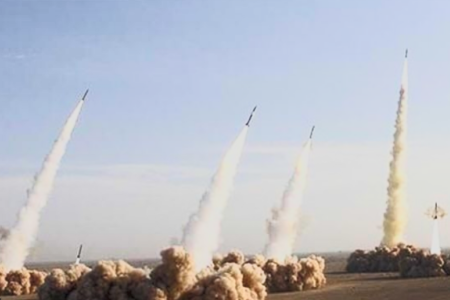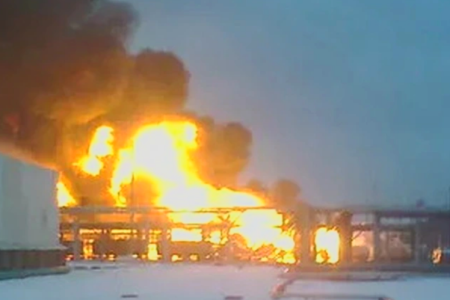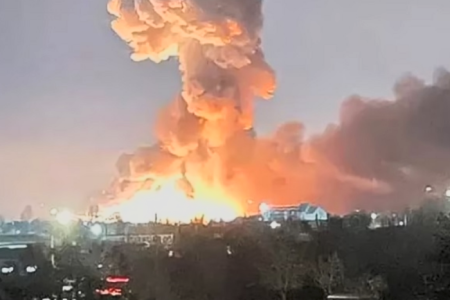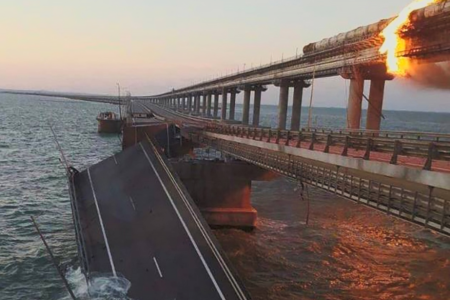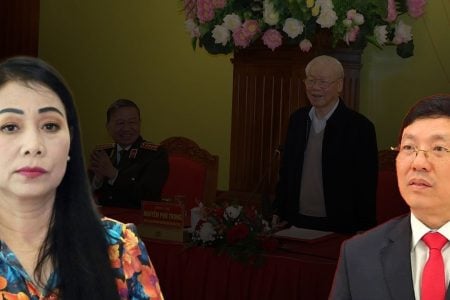
China’s relations with neighboring Southeast Asian countries worsened again after Beijing has blocked the flow of the Mekong River at one of the major upstream dams, leading to a sudden drop in water volume flowing to the downstream countries of the longest river in Southeast Asia.
The Mekong River begins a 4,600 km journey from the Tibetan plateau of China, flowing south through Yunnan province, through Myanmar into the Mekong River basin, and across the Mekong Delta of Vietnam before emptying into the South China Sea (East Sea). This river basin is the granary of the region.
The livelihoods of about 60 million people living along the lower Mekong are dependent on the river’s flow. Communities in Thailand, Cambodia, Laos, and Vietnam are surprised by Beijing’s move which makes their situation worse in the middle of the annual dry season.
Under pressure from the US and Southeast Asian countries, in August 2020, Premier Li Keqiang promised China’s plan to share data during the dry season at the Mekong River Summit of the countries member of the Lan Thuong-Mekong Cooperation initiative – an agency set up by Beijing that includes members of the MRC, Myanmar, and China.
China’s efforts to mitigate that damage by its willingness to share river flow data with the lower Mekong countries. Until last year, China only shared information about the annual wet season (June to October) water flows – when the Mekong River and its tributaries swelled and caused annual floods. After the drought in 2019, China shared more data on dry season water flows with its southern neighbors.
As of mid-February 2021, there was little improvement in the affected Mekong basin communities with China’s decision to reduce water discharge from the Jinghong Dam in Yunnan province. China’s Ministry of Water Resources informed the Lower Mekong countries of their tests at the super dam in early January 2021, almost a week after the country began to reduce flows from 1,900 m3/seconds to 1,000 m3/second. The Chinese tests were completed on January 24.
Pianporn Deetes, director of the international environmental group International Rivers in Thailand, said: “As an upstream country, China sees this river as a canal, or water source, and has the power to decide their own use of the river.”
Some people in Northern Thailand whose Mekong River flows through, said: “The water level (downstream of the Mekong) is still very low. Many stretches are bare of sand, very suddenly, because China has kept the water above.”(1)
In a report released this month, the Mekong River Commission (MRC) said the flow (on the Mekong) has fallen to “disturbing” levels (2). This intergovernmental body – representing Cambodia, Laos, Thailand, and Vietnam – manages the Mekong basin ecosystem. In the above report, an MRC official stated: “There have been sudden increases and decreases in the water level downstream of Jinghong Dam and further downstream to Vientiane (Laos), which poses a challenge for the authorities and the community in preparing and responding to the possible impacts.”
The MRC warning reveals a diplomatic defect that is plaguing China and the countries along its southern Mekong River: a lack of cooperation on shared natural resources.
“There is still a need to strengthen cooperation on transboundary water governance,” said Carl Middleton, director of the Center for Social Development Studies at Chulalongkorn University in Bangkok. The goal is to operate hydropower projects responsibly to avoid social and environmental impacts to the extent possible while recognizing and compensating for the harm produced.”
A girl walks on a dry canal in Long Phu District, Soc Trang in the Mekong Delta (AFP)

China, which calls the Mekong River the Lan Thuong, has been the focus of regional and international environmentalists because of the power it uses to increase or decrease water flows. Critics claim that Beijing uses the river as a faucet that is turned on or off to meet domestic water requirements.
Tensions between Beijing and communities in the Mekong River basin, erupted by China building 11 large dams upstream of the river, are testing the relationship the Asian powerhouse is seeking to build with neighboring countries in Southeast Asia. While holding the chair of the Association of Southeast Asian Nations (ASEAN) last year, Vietnam raised concerns about the Mekong River for the bloc’s consideration.
A severe drought in 2019 has shown the impact of dams in China and in other Mekong subregion countries such as Laos on communities living along this river. The affected areas are rice fields in the Mekong Delta of Vietnam and Tonle Sap of Cambodia, a giant lake that needs the water of the Mekong to be able to provide an abundant supply of fish – the main food in the local people’s daily meals.
David Brown, a former US diplomat, told reporters: “The Vietnamese and [Cambodians] in the lower Mekong have developed suitable agricultural systems [and riparian fishing systems] closely with the rise and fall of the river water level. Currently, the productivity of agriculture and fisheries is all affected by climate change, China’s Mekong dams and dam blocking on the Mekong tributaries in Laos and to a lesser extent the Central highlands of Vietnam.”
Some local community leaders, such as Mr. Niwat Roikaew, in Thailand, feel very anxious. “As a Mekong community, we need to discuss and come to an agreement on the amount of water that needs to be discharged [from Chinese dams] to keep the natural cycle of many people live along this river. China cannot make this decision alone.”
China practiced so-called water politics when it sought to control the Tibetan highlands, which is the source of most of the largest rivers in Asia. China is also one of three countries that voted against the adoption of the 1997 UN Convention on the Use of International Water Resources. China is also a country that did not participate in the 1995 Mekong Agreement which consists of only 4 countries in the Lower Mekong region: Laos, Thailand, Cambodia, and Vietnam.
Vietnam is the only member with a vital interest in both hotspots – as a claimant in the South China Sea and the Mekong Delta. Therefore, there are opinions calling for Vietnam to take the leading role and lobby for support of the “ASEAN Agreement on East-Mekong Sea Mutual Interoperability.”
Since joining ASEAN, Vietnam has also had the most remarkable development trajectory among all CLMV countries (Cambodia, Laos, Myanmar, and Vietnam) and acts as an informal mediator between the five founding members of ASEAN and the CLMV countries.
However, the most important issue is that China must be accountable to the communities living along the river, and so far, ASEAN has not been drastic about this issue.
Recently, the US has actively promoted a return to the LMI (Lower Mekong Initiative). The recent LMI upgrade shows Washington acknowledging that the Mekong is linked to the broader open and free Indo-Pacific Vision (FOIP) – in general, this is a pre-response. China’s increasingly assertive attitude in the Indo-Pacific. The US FOIP aims to “vigorously compete against efforts to limit the autonomy and freedom of choice of Indo-Pacific countries,” including smaller countries in the river region. The Mekong.
Thoibao.de (Translated)
Source: https://www.rfa.org/vietnamese/news/blog/china-blocks-mekong-again-02282021094709.html





